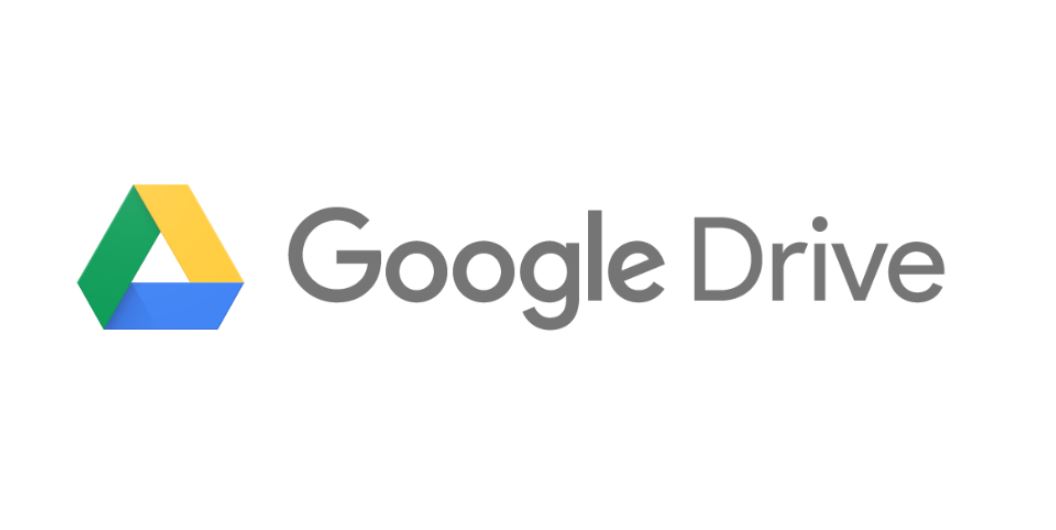Google Drive The Ultimate Cloud Storage Solution
13th November 2024
Jake Hopkins
Are you seeking a dependable and convenient method for storing and accessing your files from any location?
Google Drive offers a solution to this need. This exploration delves into the nature of Google Drive and its primary features. Instructions are provided on creating an account, uploading and organizing files, and collaborating with others via Google Drive. Additionally, the advantages of utilizing Google Drive, including its expansive storage capacity and seamless integration with other Google services, are highlighted.
Important security measures are discussed, and a comparison is drawn between Google Drive and alternative cloud storage solutions. Follow along to gain insights into the comprehensive cloud storage solution that Google Drive presents.
What is Google Drive?
Google Drive is a versatile cloud storage solution offered by Google that enables users to store, organize, and retrieve their files and data through an online platform. It provides an effective system for document storage, file sharing, and data administration, rendering it a vital tool for both personal and professional purposes.
What are the Features of Google Drive?
Google Drive provides a wide range of features specifically crafted to improve file management and synchronization, offering users a user-friendly interface and generous storage capacity.
With its capability to sync files across various devices, Google Drive ensures that your documents remain current and accessible from any location. The platform's intuitive interface simplifies file organization, allowing users to efficiently categorize and search for specific documents.
The file versioning feature on Google Drive give the power tos users to monitor changes and revert to previous versions when necessary. The ability to edit documents directly on the platform enhances convenience by eliminating the need to download files for editing purposes. Furthermore, the availability of mobile applications makes it effortless to access and manage files while on the move.
How to Use Google Drive?
Utilizing Google Drive entails a series of steps aimed at optimizing its file storage and sharing functionalities, rendering it an invaluable tool for data organization and collaborative document handling.
How to Create a Google Drive Account?
The establishment of a Google Drive account involves a clear-cut procedure that commences with the establishment of a Google account, granting entry to all Google services.
Upon the successful creation of the Google account, users can proceed to access their Google Drive. This can be achieved by navigating to the Google Drive website or app and logging in using the Google account credentials. Google Drive provides a seamless integration with other Google services such as Google Docs, Sheets, and Slides, facilitating the storage, sharing, and collaboration on documents and files.
Additionally, users have the option to install the Google Drive desktop application to facilitate the synchronization of files across multiple devices. This ensures that vital data is consistently accessible regardless of the user's location.
How to Upload and Store Files on Google Drive?
The process of uploading and storing files on Google Drive is straightforward and accommodates a range of file formats and storage choices, facilitating data backup and availability.
To upload a file, users have the option to drag and drop the file from their computer directly into their Google Drive account or utilize the 'New' button to select the desired file for upload. Google Drive supports a variety of common file types, including documents, images, videos, and more, making it adaptable to diverse requirements.
Following the upload, users can categorize files into different folders, enhancing data organization. Google Drive's cloud storage functionality allows for the secure backup of crucial data, ensuring that files are stored safely and can be readily accessed from any device connected to the internet.
How to Share Files and Collaborate on Google Drive?
Google Drive enables streamlined file sharing and collaboration by offering a range of sharing options and file permissions, thereby facilitating efficient document sharing. Users have the capability to establish permissions that govern the viewing, editing, and commenting privileges of shared files, ensuring data security and confidentiality. Real-time collaboration functionalities, including live editing and commenting, permit team members to collaborate simultaneously on a single document, thereby enhancing productivity and mitigating version control challenges.
Moreover, the integration with other Google services such as Docs, Sheets, and Slides enhances teamwork by offering a consolidated platform for all project-related files and communications.
How to Organize and Manage Files on Google Drive?
Efficient file organization and management on Google Drive are facilitated through its comprehensive file management tools, enhancing the accessibility of files within a digital workspace.
Google Drive provides users with a range of tools designed to assist in maintaining file organization. Folders enable the grouping of related files, simplifying the process of locating specific documents. Labels offer users the ability to categorize and tag files for efficient sorting. The robust search functionality on Google Drive permits users to swiftly find any file by inputting keywords or specific criteria. These integrated features contribute to the establishment of a well-structured digital workspace, reducing clutter and optimizing workflow efficiency.
What are the Benefits of Using Google Drive?
Google Drive presents a multitude of advantages as a cloud storage solution, comprising substantial storage capacity, advanced collaboration features, seamless integration with various Google services, and heightened productivity capabilities.
1. Easy Access and Syncing Across Devices
One of the key advantages of Google Drive is its convenient access and synchronization across multiple devices, ensuring that files can be accessed from any location with an internet connection.
This synchronization capability enables users to seamlessly collaborate on documents, spreadsheets, presentations, and other files from various devices without the need for manual updates or concerns about version control. Whether individuals are working from home, in the office, or on the move, having instant access to the most up-to-date versions of their files is essential for enhancing productivity and facilitating collaboration. By utilizing remote access to Google Drive, users can effortlessly retrieve, edit, and share files, thereby improving efficiency and removing geographical barriers to working from any location.
2. Large Storage Capacity
Google Drive provides users with a wide range of storage options tailored to accommodate diverse data storage requirements. Users have the flexibility to select from complimentary plans offering up to 15GB of storage or premium plans that extend storage capacities from 100GB up to 30TB. This scalability give the power tos users to initiate their data storage journey with a modest plan and seamlessly upgrade it in congruence with their evolving data needs.
The determination of the optimal storage plan hinges upon various factors including the magnitude of data to be stored, financial constraints, and the necessity for additional functionalities such as collaborative tools or advanced security measures. By conducting a thorough evaluation of these factors, users can ascertain the storage plan that best aligns with their specific requirements.
3. Collaboration and Sharing Features
The collaborative and sharing functionalities of Google Drive facilitate real-time cooperation among users, rendering it an exemplary tool for document collaboration and teamwork in an online setting.
Through real-time editing, team members have the capability to concurrently modify a document, spreadsheet, or presentation without the need to await each other's input. The commenting functionality fosters seamless communication by permitting users to offer feedback or pose inquiries directly within the document, thereby nurturing a collaborative atmosphere. The file sharing capabilities simplify the distribution of documents among team members or external stakeholders, ensuring that all parties are operating with the most current information available. These functionalities not only augment team productivity but also streamline communication processes, ultimately resulting in enhanced efficiency and efficacy in collaborative endeavors.
4. Integration with Other Google Services
Google Drive seamlessly integrates with other Google services, utilizing a single Google account for access to a variety of cloud applications and cross-platform support. This integration with services such as Google Docs, Sheets, and Gmail provides users with a unified experience, enabling them to create and share files, collaborate in real-time, and communicate effortlessly within a cohesive ecosystem.
By leveraging these interconnected tools, users can enhance their productivity, reduce the necessity for manual data transfers, and ensure seamless version control. The ability to access, edit, and store documents across multiple platforms with ease not only saves time but also fosters improved organization and collaboration among individuals or teams.
What are the Security Measures in Place for Google Drive?
Google Drive utilizes strong security measures to guarantee data security and file protection, thereby upholding user privacy and providing a secure platform for storing confidential information.
1. Encryption of Data
Google Drive employs encryption to ensure the security of data, guaranteeing the protection of files during both transfer and storage.
This encryption protocol encompasses a variety of methods aimed at preserving data privacy. Google Drive utilizes a blend of symmetric and asymmetric encryption techniques. Symmetric encryption relies on a single key for both encrypting and decrypting data, thereby facilitating rapid processing. Conversely, asymmetric encryption employs a pair of keys - one public and one private - to strengthen security measures. These encryption mechanisms operate collectively to shield confidential information stored on Google Drive from unauthorized access or interception.
2. Two-Factor Authentication
Two-factor authentication enhances the security of Google Drive by introducing an additional security layer, thereby ensuring that only authorized individuals can gain access to their accounts. This process involves the utilization of two distinct verification methods, such as a password and a unique code dispatched to the user's mobile device. Consequently, it becomes considerably more challenging for potential threat actors to illicitly infiltrate the system. By mandating the user to furnish not only something they know (e.g., a password) but also something they possess (e.g., a mobile phone), two-factor authentication significantly mitigates the likelihood of cyber breaches and identity theft. This supplementary security measure serves to safeguard user privacy and instills a sense of assurance in knowing that the confidential data housed within Google Drive is effectively shielded from unauthorized access.
3. Regular Backups
Google Drive conducts routine backups to guarantee the protection and recoverability of data in the event of accidental deletion or data loss. These backup procedures play a critical role in securing essential files and documents housed on the platform.
Through the creation of data snapshots at regular intervals, Google Drive minimizes the likelihood of irreversible data loss and furnishes users with a safety mechanism for emergencies. Should accidental deletion or corruption occur, users can effortlessly retrieve prior iterations of their files via the backup system, facilitating uninterrupted workflow continuity and instilling a sense of reassurance.
How Does Google Drive Compare to Other Cloud Storage Solutions?
When conducting a comparative analysis between Google Drive and alternative cloud storage solutions, it is imperative to evaluate key factors including pricing structures, storage capacities, available features, and overall performance metrics.
1. Pricing
Google Drive provides various pricing plans that are designed to accommodate diverse storage requirements and financial considerations, thereby ensuring accessibility for a broad spectrum of users. Users of Google Drive have the option to select from complimentary storage alternatives with restricted capacity to subscription-based plans that offer expanded storage capacities.
The adaptable nature of Google Drive's pricing structures give the power tos users to adjust their storage capacities accordingly. When juxtaposed with alternative cloud storage service providers, Google Drive distinguishes itself through its intuitive interface and seamless integration with other Google offerings.
Additionally, the collaborative tools embedded within Google Drive have rendered it a favored choice among both individual users and enterprises, delivering substantial utility across all pricing tiers.
2. Storage Capacity
Google Drive offers generous storage capacity and the ability to upgrade as necessary, ensuring users have ample space for their data storage needs.
Google Drive's storage capacity distinguishes itself from other cloud storage solutions due to its flexibility and scalability. Users can effortlessly expand their storage space as their requirements evolve without encountering any inconvenience or interruptions. This capability accommodates individual users with diverse storage needs as well as businesses that require extensive cloud storage for their operations. With a user-friendly interface for managing storage options, Google Drive presents a convenient and effective solution for securely storing and accessing data in the cloud.
3. Features and Functionality
Google Drive is distinguished by a wide array of features and functionalities aimed at enhancing file management and user experience, positioning it as a premier choice among cloud storage solutions.
One of the key advantages for users of Google Drive is its seamless integration with various Google services, including Gmail and Google Docs. This integration facilitates efficient collaboration and enhances overall productivity. Additionally, the platform enables users to access files from any device, with the added benefits of offline availability and automatic syncing across devices. These features give the power to users to work on their files with flexibility and convenience, regardless of their location.
Furthermore, Google Drive offers a substantial amount of free storage capacity alongside competitively priced paid plans. This affordability makes it an attractive solution for both individuals and businesses seeking reliable cloud storage services. In comparison to other providers in the market, Google Drive's user-friendly interface, robust security protocols, and extensive compatibility with third-party applications further distinguish it as a standout choice for users looking to streamline their file management processes.















